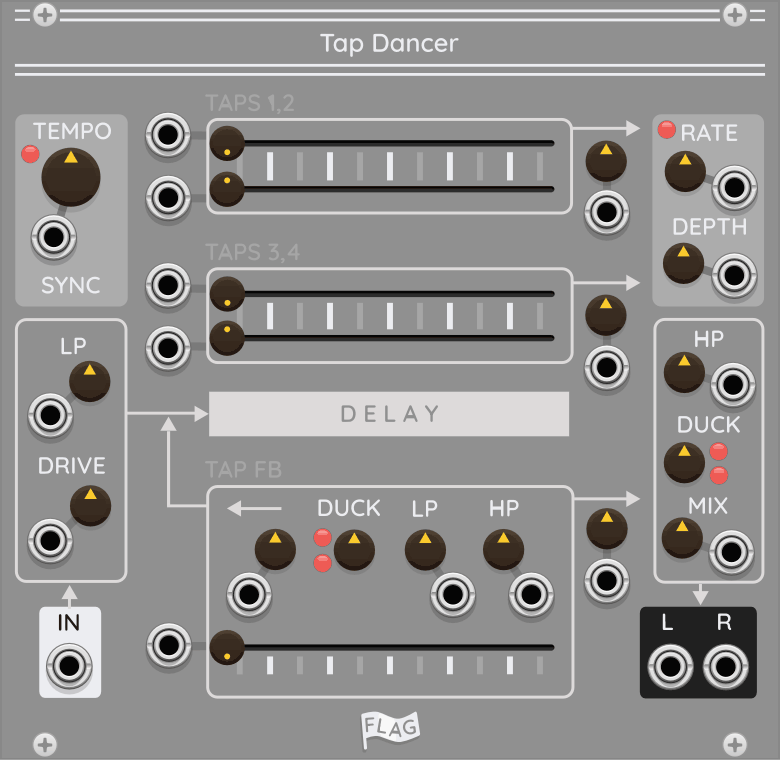
Let's go over the parts one by one. Loosely following the signal-path.
When the signal enters the effect the first thing that happens is that it's saturated. This saturation shapes the signal by boosting the signal below 9 volt (absolute value) and lowers anything above 9V. After this it's filtered with a 2-pole low-pass filter with a fixed resonance.
The central piece of "Tap Dancer" is a mono delay line that get sampled by a few "taps".
There are 4 main taps grouped in pairs 1-2 and 3-4. Each pair is "hardwired" to left and right channels. A horizontal slider controls the time of each tap. The time is specified in number of "beats" Each tap is also controlled by a cv-jack to the left of the slider. The format of the tap-cv is 1 beat/v. To the right of the slider is the level-control per tap-pair.
The fifth tap is a special beast. It is mainly used to feed-back into the input. It provides one-pole lowpass and highpass filters to shape the repeats. It also has a useful ducking control. This control enables very high feedback levels without distorting. The feedback path is soft-clipped before being mixed back with the input.
Rate and Depth controls modulation for the main-taps.
Tempo controls the length of a "beat". If the "SYNC" cv-input is patched, it controls the tempo. It accepts a trigger or a gate and measures the time between rising edges (aka positive edge).
At the end of the signal-chain is a two-pole high-pass filter, ducking, and mix controls.
I hope you like it!
Please report any issues to myself at: https://community.vcvrack.com/u/jnorberg
Thanks,
Jonas